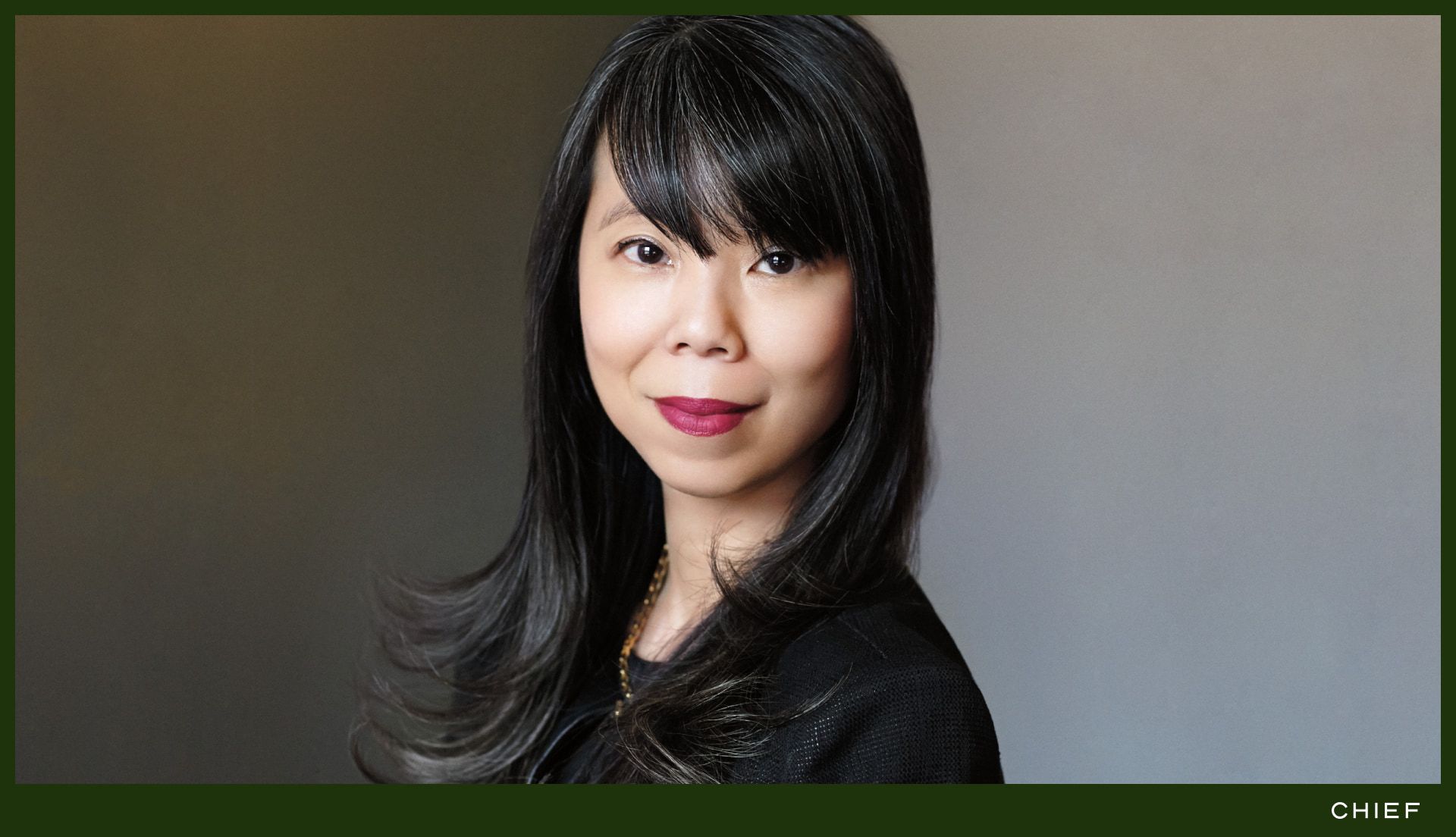You’d be hard pressed to find someone in the beauty industry who hasn’t heard of JuE Wong. As the former President of Elizabeth Arden, CEO of Strivectin, and Global CEO of Moroccanoil among others, she has brought generation-defining brands to scale across four continents and seven countries. Who better to hire than a turnaround CEO for the cult haircare growth brand Olaplex with ambitious plans for global expansion.
In just two years as Chief Executive, Wong transformed the niche brand into a category-defining beauty staple. Accomplishing the things marketers only dream of, Olaplex’s meteoric growth under Wong’s leadership saw 81% increased net sales year over year, virality on TikTok closing in on nearly 800 million views, and one of the largest beauty IPOs at $1.6 billion last fall that quickly rose to a market cap of $16 billion (now hovering at $10 billion). Sitting down with Chief Member Katie Welch, Chief Marketing Officer at Rare Beauty, Wong reveals how the Olaplex team maintained its brand love through both turbulent times and massive growth.
On cultivating brand love
“People will not buy something just because you offer it up. People buy something because either they want it or they need it. For Olaplex, what has always worked, even before I joined, is to deliver something that is not only game-changing but is also the technology that truly offers up the best solution that someone is looking for.”
On the value of user-generated content
“I remember when I joined, #Olaplex on TikTok had 24 million views, and today #Olaplex is closing in on 800 million views. So I put more effort behind the newer platforms as well as the existing platforms, giving the team the bandwidth to really lean in on outside resources and in-house talent. You know, looking back, everybody said, Did you have a crystal ball?
“We don't create produced content, and when we do, it’s for a reason. We have close to 13.2 million #olaplex user-generated content on Instagram alone. When I was sharing this on the investor roadshow, I was like, ‘Look, every user-generated content per Adweek, will cost a company anywhere between $300–$400… At that ratio of $300 per post, we have a $4 billion library.’ When you have a $4 billion user-generated content library, where every brand dies to have user-generated content, because that's the most highly engaged content, you really cannot squander the love, and the engagement, and the kind of connection that people want to make with this brand.”
On leading through uncertainty
“The team is everything, right? I have helped five different businesses turn around. I have to say, every one of those teams that I've been with brings something very unique, and Olaplex is no different. I've learned from every team that I have had the privilege of serving with and with that said, I just think that you constantly learn. I mean, who would have thought of COVID? Who would have thought that Ukraine would be under attack? That the stock market would be where it is? The macro situation, the geopolitical situation — we are never really quite ready for something like this. But I think it shows the resiliency of human beings, because when something like this gets thrown at us, we don't just put our hands up and say, Okay, I give up. Instead, we fight through it, we power through it. I think it takes both leadership and team members to all want to come together, because you can only push so much as a team leader, but so much can happen when your team wants to make things happen.”
On the collaboration behind Olaplex’s IPO
“I think knowing what you don't know sometimes gives you bravery. I was very honest with the team. We had very solid team members who were brought under the tent, so to speak, because we could not be talking about [the IPO] with everyone. But when you bring senior members under the tent, they also need their team members to help them. So the ability to still extract the best piece of everybody to make the IPO a possibility is a reflection of all the leadership teams that we have. If you don't have that, it's only a cult of personality — if it was only somebody like me it would never be sustainable. We have a culture of collaboration, and we have a culture of working with each one of us together, knowing that the brand is bigger than ourselves… When I look at the C-Suite that we gathered together prior to the IPO, everybody was running in the same direction.
“When I tell people that we did this IPO in six months, everybody looks at us and says, ‘Do you know that people usually take a year to do that?’ I didn't know it was supposed to be an annual thing, we all did it like it was a six-month project. Anyone who saw our Nasdaq pictures and video clips will see the faces on those video clips that money cannot buy. Every time I look at those videos and those faces looking up at the jumbotron, I tear up because we could make a difference in their lives.”
On dealing with the supply chain crisis
“I always tell the supply chain team ‘I'm very grateful for all of you because you are like the weathermen. You get the weather right.’ You get the weather wrong and everyone is all over you. And [the] supply chain is one of those jobs. If you get it right, you ship everything on time, you've got the inventory, everybody will just say, ‘Well, that's your job.’
“We look at the macro-situation, we look at the micro-situation, and we make sure that we have relationships with all of our key suppliers, with all our co-manufacturers, with all our 3PL. Then we extend that into understanding who their suppliers are for the packaging, for the ingredients, so that we go a layer deeper and we also form relationships with those partners. We look at how we can be efficient in thinking ahead. If we are hearing and noticing that things are taking a longer lead time, we would double-click and double down on giving our own partners more time by going out with a better forecast, placing our POs earlier, and having those conversations on solving problems rather than blaming.”
On why she doesn’t point fingers
“Not having a blaming culture really helps, because people are not afraid to come to you with bad news. One of my ‘JuE-isms’ is that ‘Good news travels fast, but bad news travels even faster.’ Because we can't help [with the problem] if the bad news lands at our door and [it’s] going to happen in the next second. But if you come to us with what you think is bad news and we have time to respond, react, and address it, I think the team will be stronger for it.
“I believe that as a group, as a C-Suite, what we need to do is to help buffer the team. Let the team do their best work, which is in executing, thinking, and operating with us and for us, and then for us to really continue to give them the latitude to be successful but provide a net and catch them should they fall. I always say, ‘You do not point your finger at someone, because three fingers point right back at you.’ The one to be blamed is never the person you're pointing the finger at, the one to be blamed is always going to be yourself.”
On her approach to retaining employees amid The Great Resignation
“First and foremost, have a strong program for the culture of the company. Our head of HR, [Chief Member] Heather Harper… she will always remind me that, ‘Look, all of these programs are put together for a reason,’ because people want them. They have told her that they feel like they need [it] to belong. It is quite easy for me not to realise that, because, think about it, I've been in the workforce for so long. I know how to navigate things. I have contacts in the business. Isolation, for me, is less of an issue. But for younger working members who may be in the business for only a couple of years, who have never worked remotely and have always been working for companies, they need the camaraderie. They need a social fabric where they can help engage and not be afraid to go call somebody who is their peer and ask a question.”
On the business of karma
“Sometimes along the way you need people who support you. But you need to also pay it forward and pay it back. People say karma is a bitch; know that karma can work the other way, too. It can actually work for you if you put good out there.”

